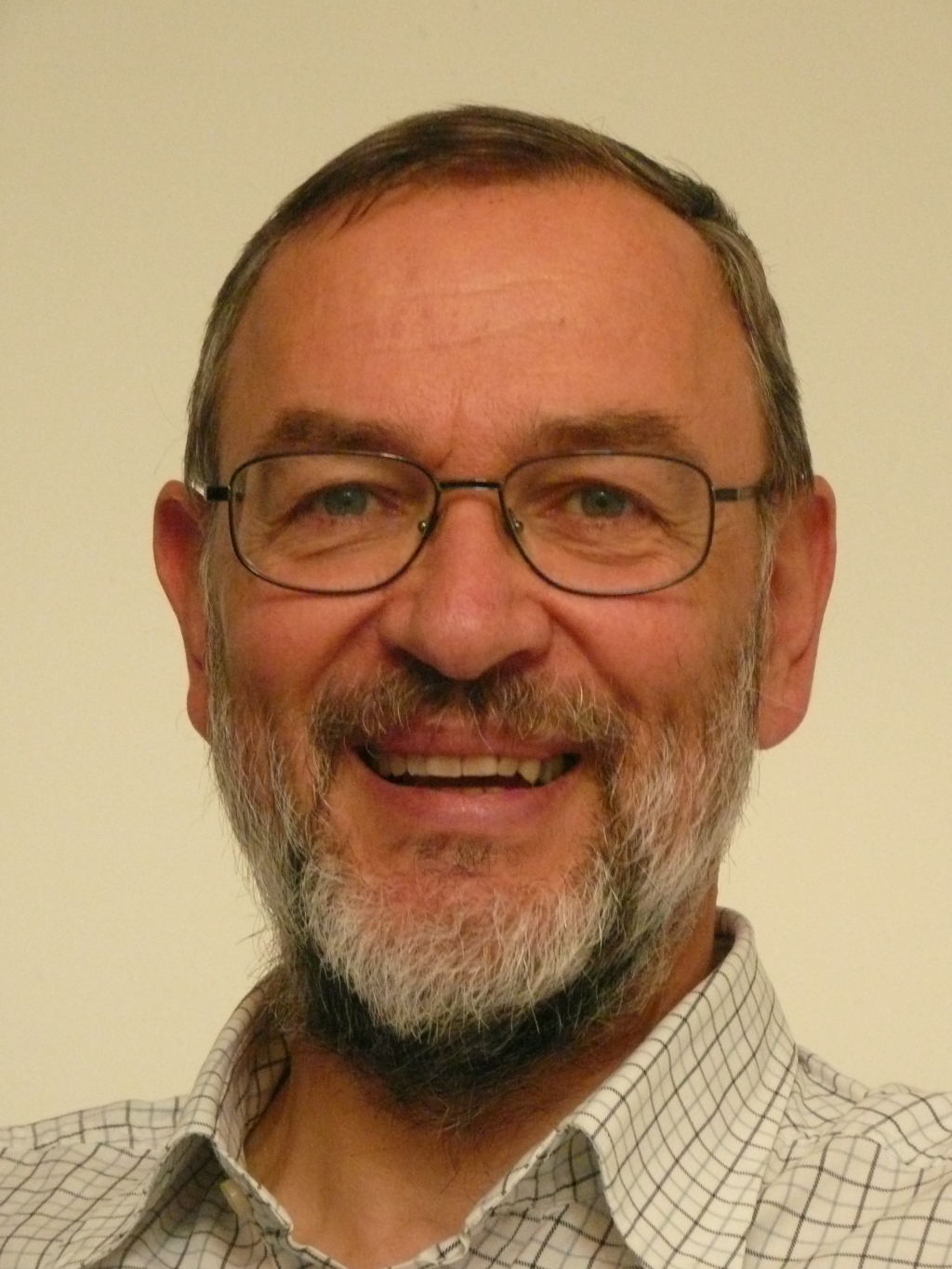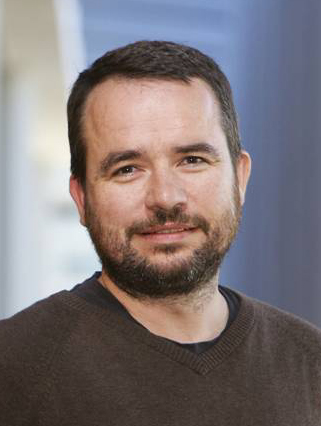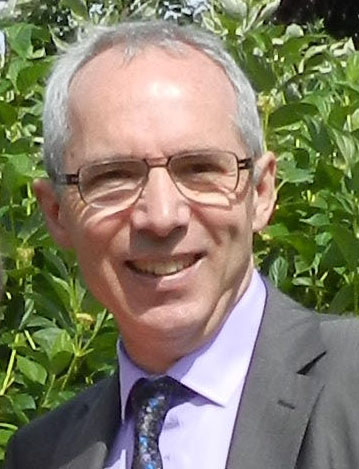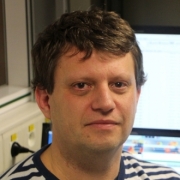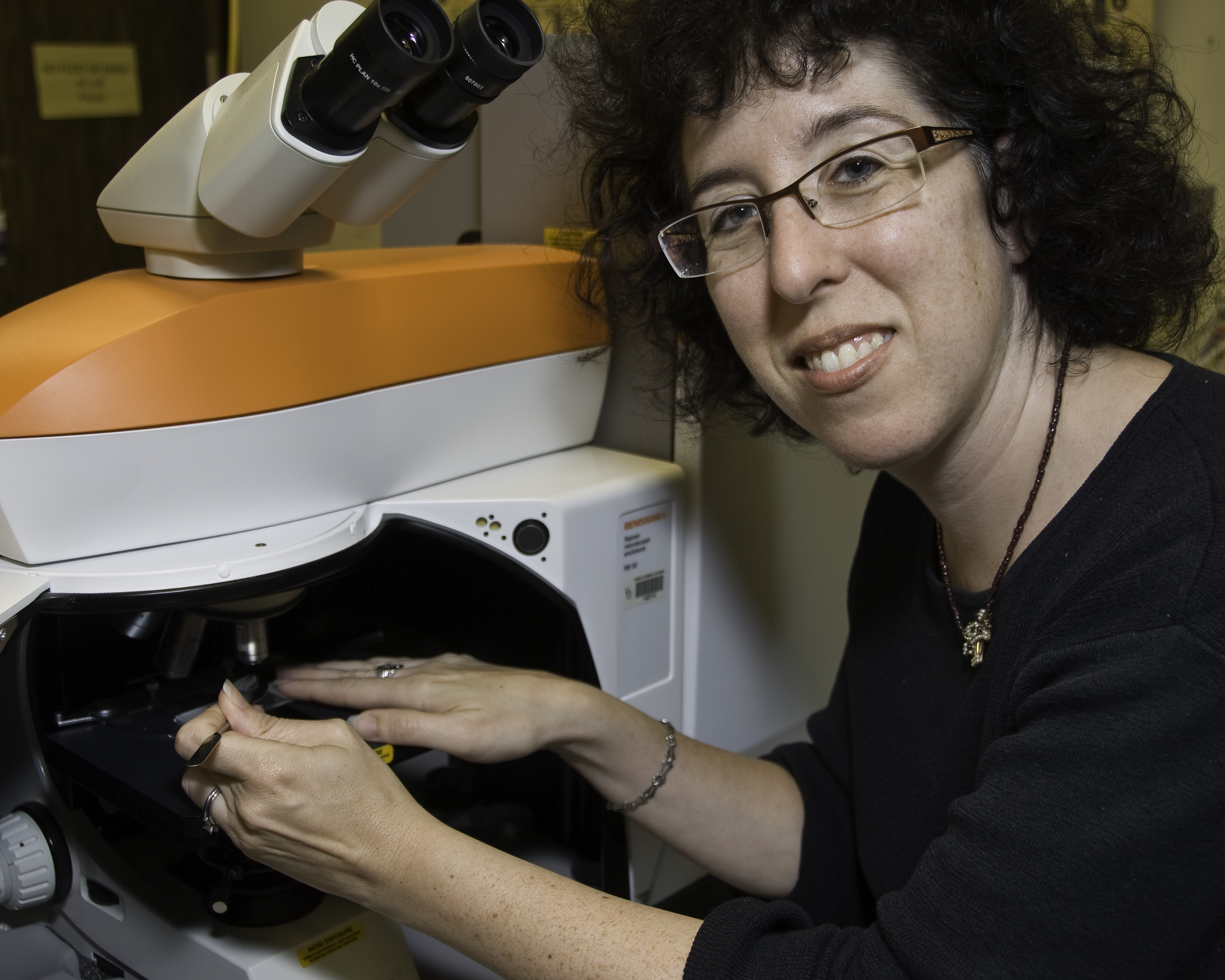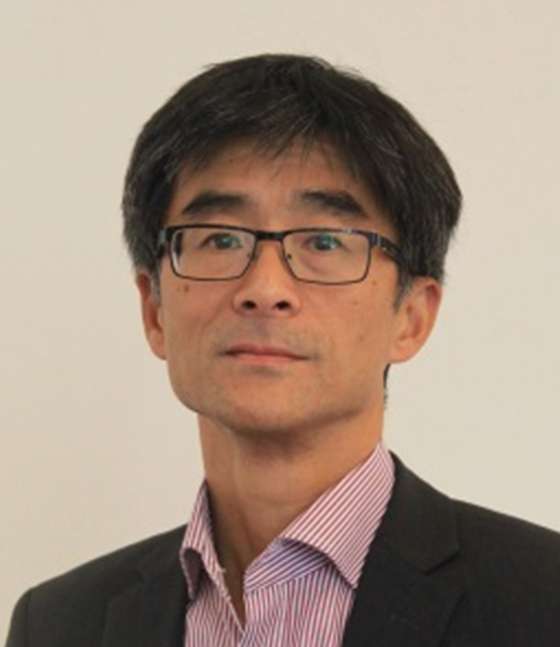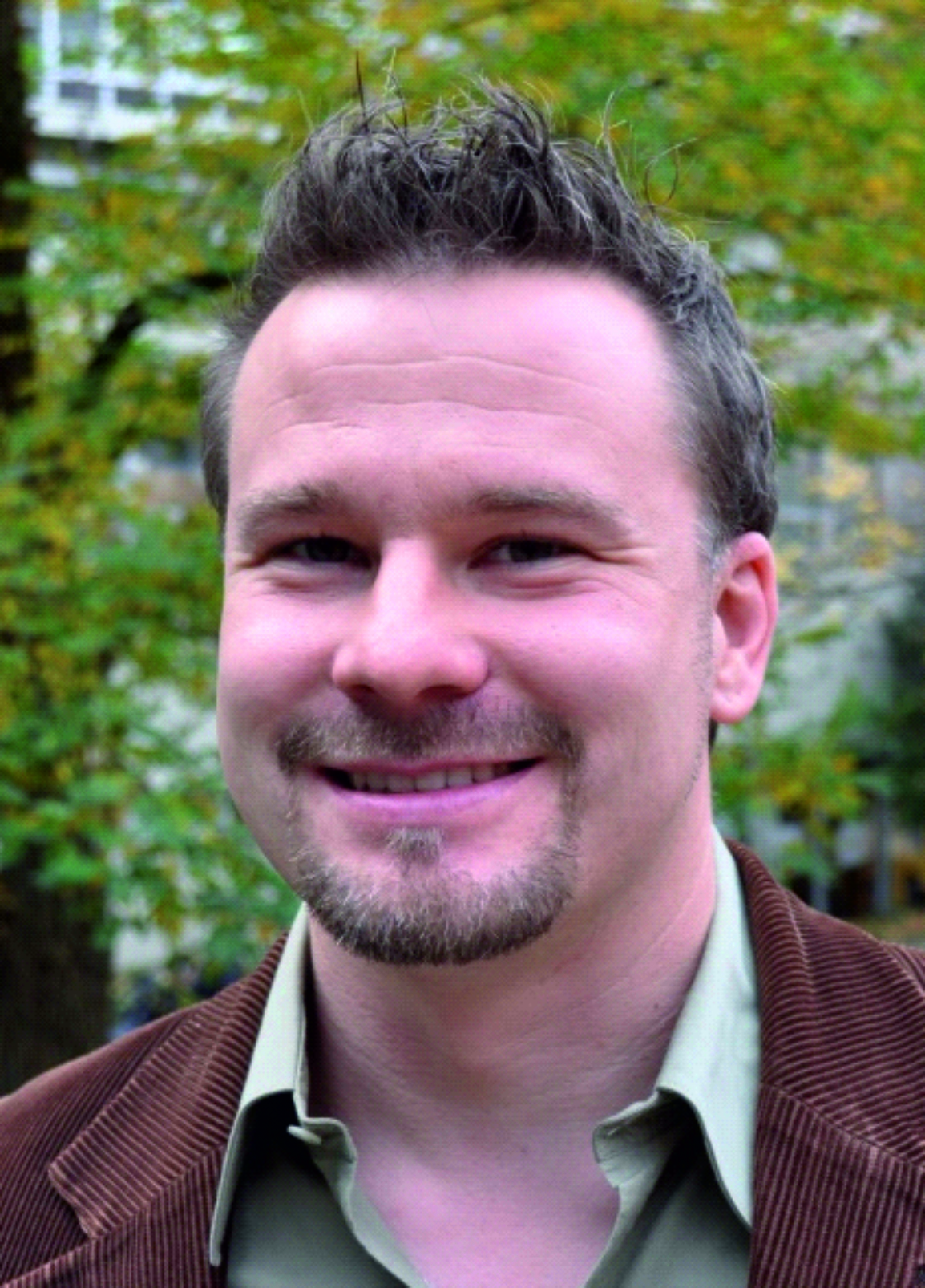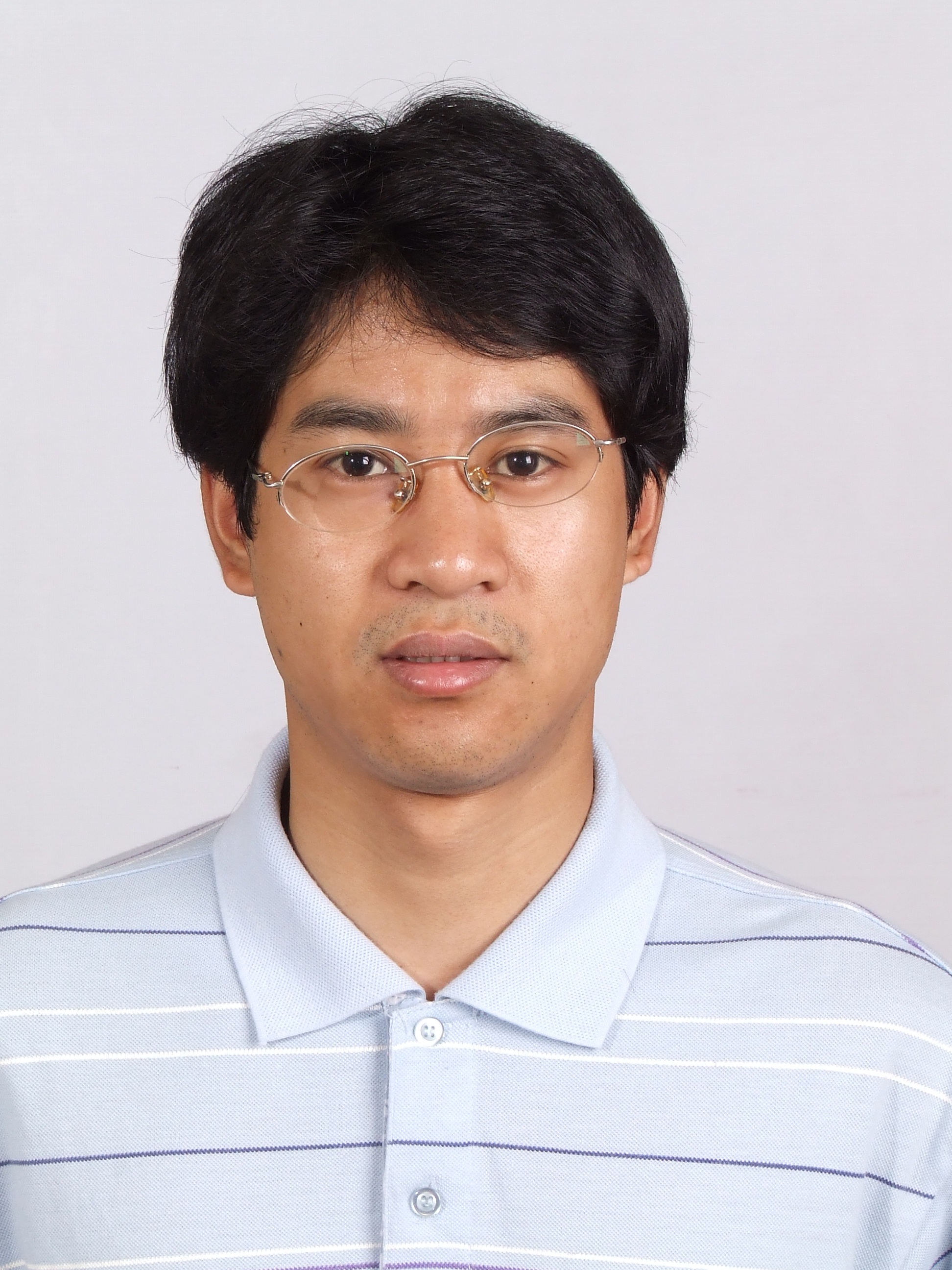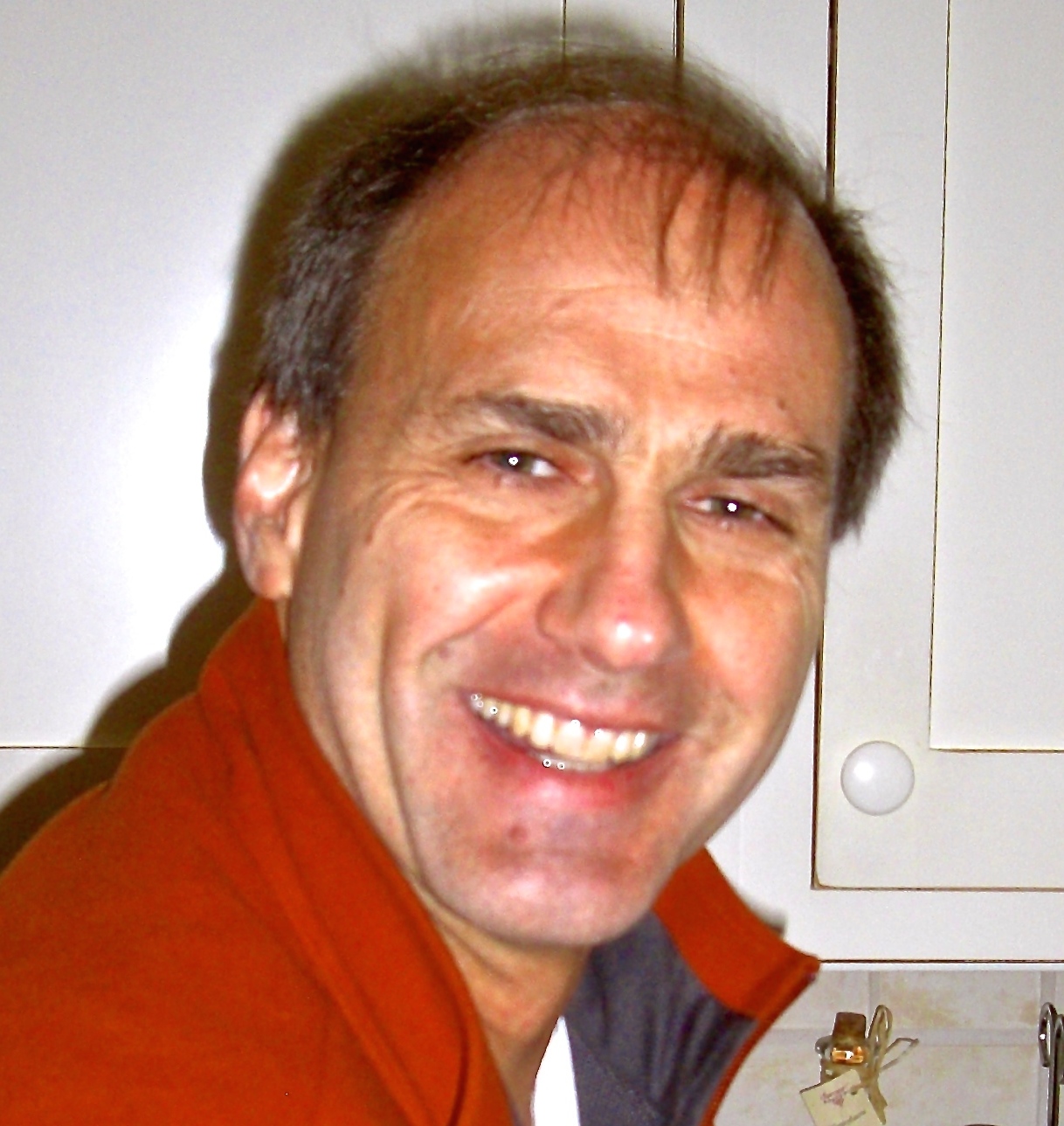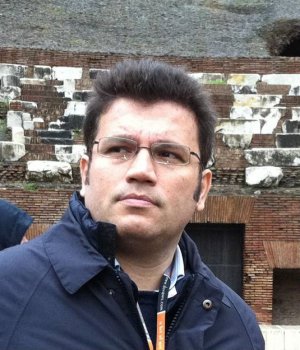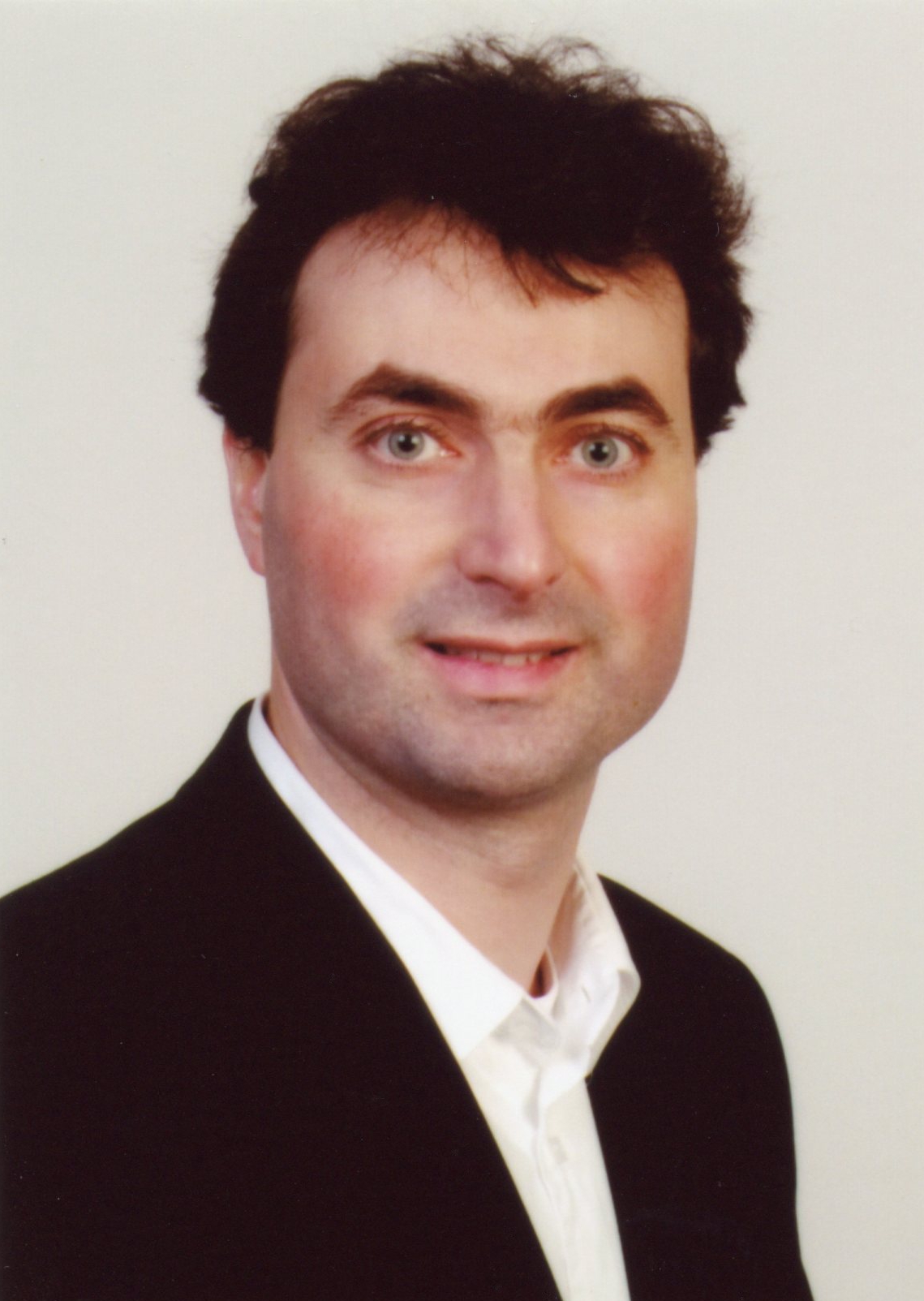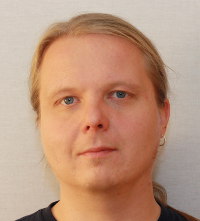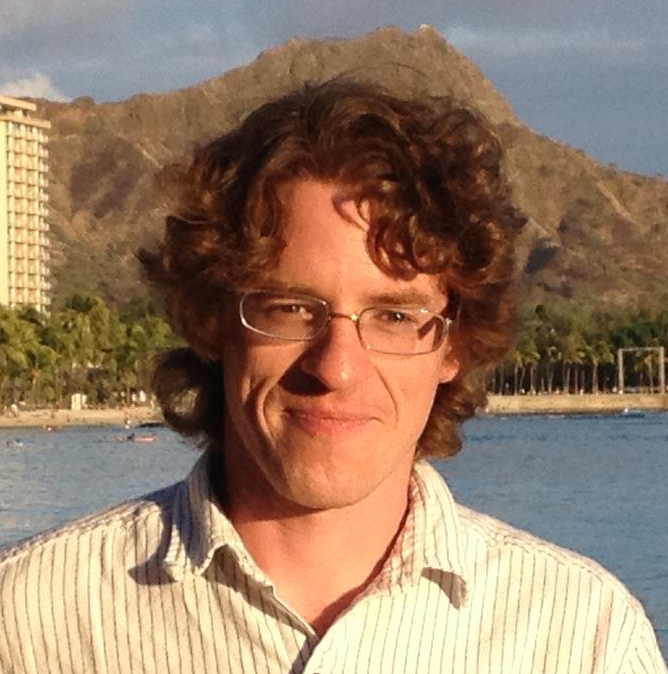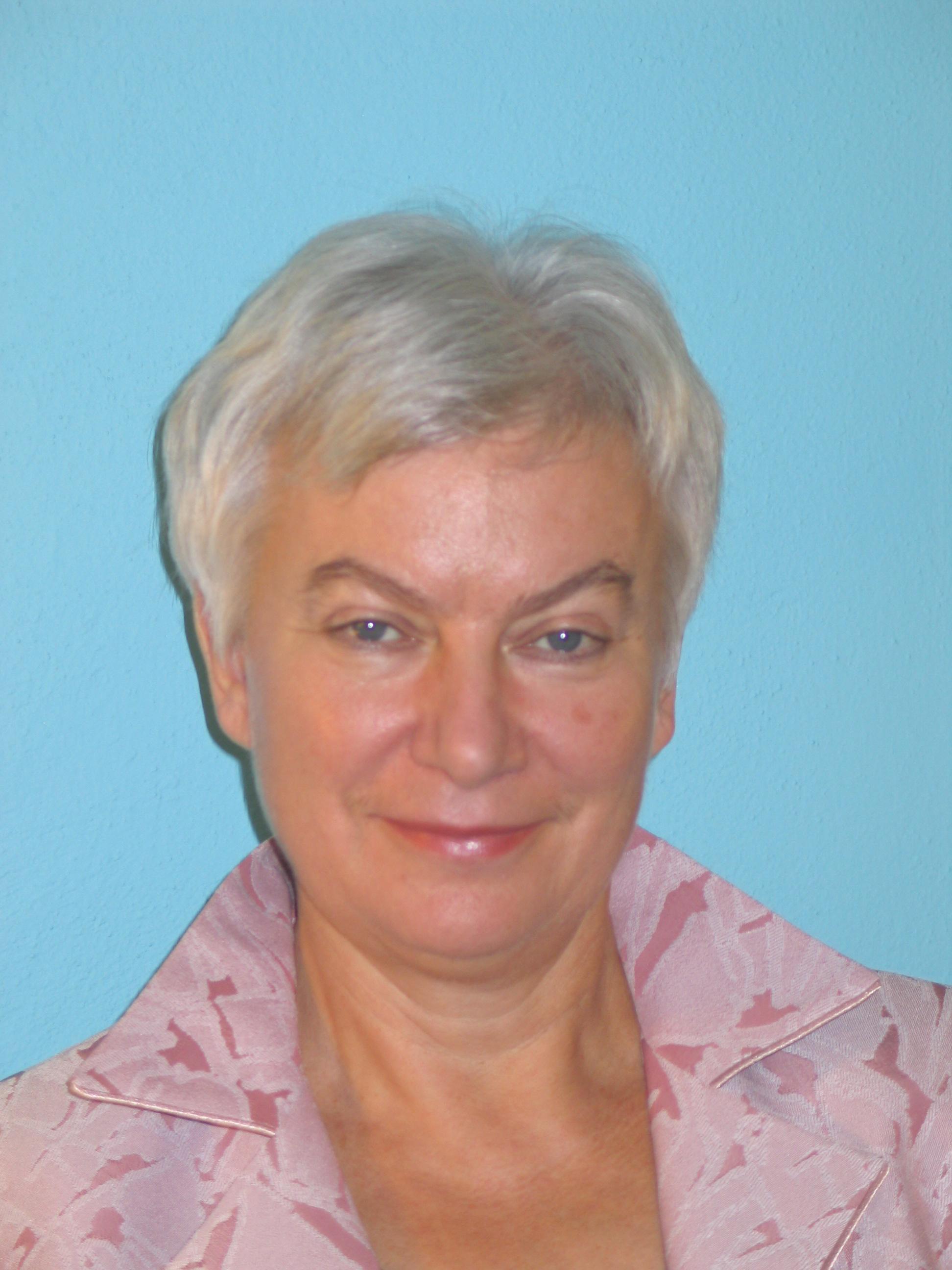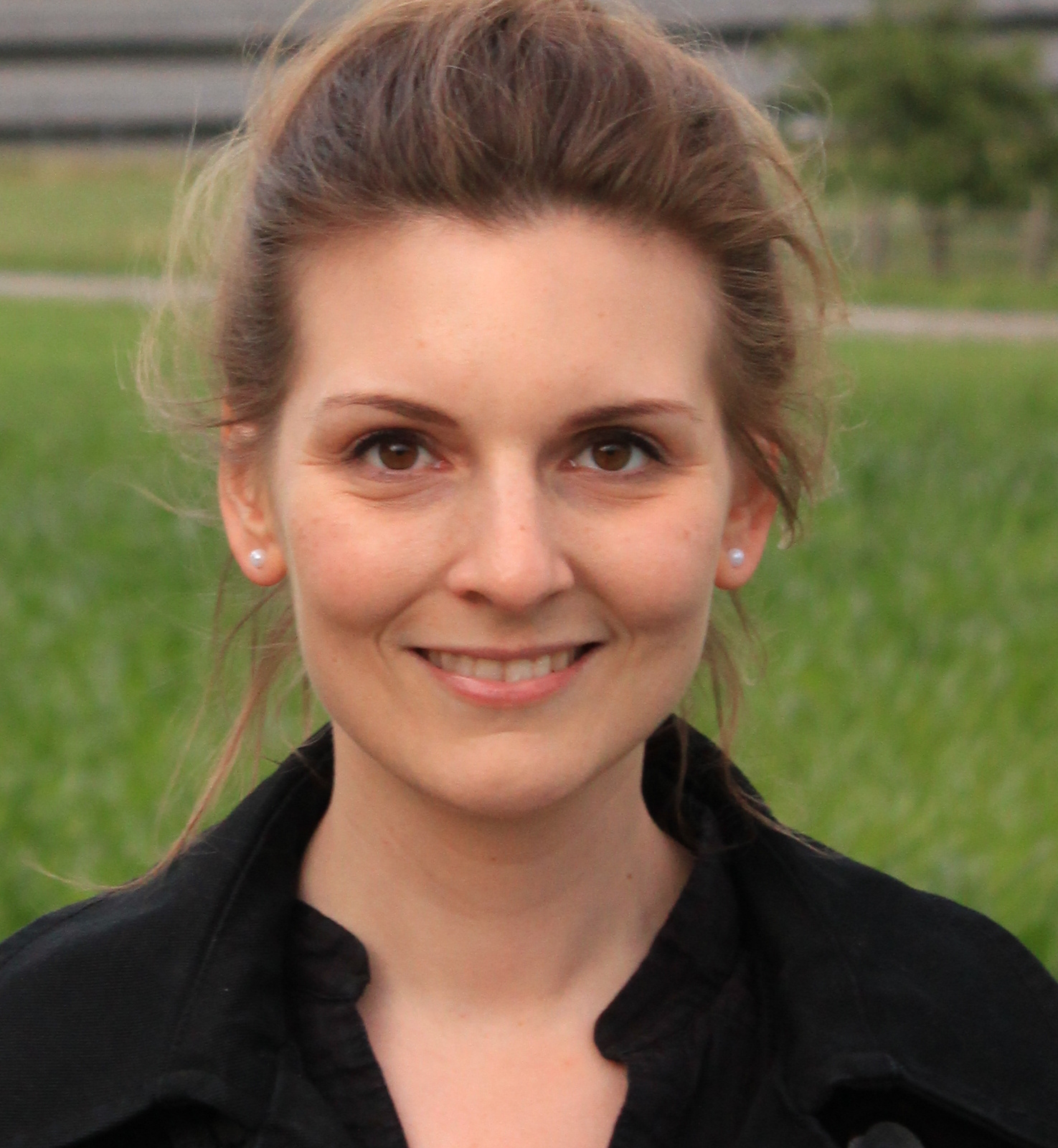Invited speakers
| Plenary speakers | |
|
|
| Keynote speakers | |
|
|
|
Simon Bare (United States) |
|
|
Research Fellow UOP, A Honeywell Company IL, USA
|
In situ XAFS: An Industrial Perspective X-ray absorption spectroscopy is used by many industrial R&D groups to investigate the local coordination environment of elements in their specific materials of interest. In this case, the materials are heterogeneous catalysts, and the in situ strength of the technique is of paramount importance. The talk will discuss strengths and limitations of XAFS as applied to technical catalysts with examples from a wide range of catalysts and catalytic chemistry. Soft, tender, and hard x-rays all have particular applications, and there will be a discussion of the equipment needed to conduct the research. |
|
Serena de Beer (Germany) |
|
|
Max-Planck-Institut für Chemische Energiekonversion Mülheim an der Ruhr, Germany
|
X-ray emission spectroscopic studies of biological catalysis The efficient and reversible storage and release of energy in chemical bonds is an essential aspect, and a great challenge in energy research. The activation of small molecules (N2, H2, O2, CO2) can be achieved by homogenous, heterogeneous and biological catalysts. Of the possible metal catalysts, Nature is unsurpassed in terms of facilitating small molecule activation with stunning efficiency and selectivity. This has inspired much fundamental research directed towards understanding the enzymatic mechanisms on an atomic level. In this talk, I will discuss recent applications of valence-to-core X-ray emission spectroscopy (VtC XES), high-energy resolution fluorescence detected X-ray absorption (HERFD XAS) and valence resonant XES in biological catalysis, with a focus on dinitrogen reduction and hydrogen production. The advantages of these methods over more conventional X-ray spectroscopic measurements will be highlighted.
|
| Peter Blaha (Austria) | |
|
Inst. Materials Chemistry Vienna, Austria
|
Electron-hole interactions in theoretical XAFS calculations I will review the possible approximations using DFT ground state theory for the calculation of XANES spectra and show that it is essential to include in some way the electron-hole interaction. While DFT core-hole supercell calculations yield reasonable spectra for K-edges of light elements, transition-metal (TM) L2,3 edges are poorly described. We need to go beyond the single-particle theory and solve the two-particle Bethe-Salpeter (BSE) equation which involves a screened direct coulomb interaction and an unscreened exchange term between hole and electrons. Very good results for early TM compounds like CaF2 or TiO2 are obtained and the origin of the observed deviation from single particle theory is analyzed. |
| Hugh Harris (Australia) | |
|
School of Chemistry and Physics Adelaide, Australia
|
X-ray probes for heavy elements in health and disease. The chemistry of heavy elements such as selenium, copper and manganese in biological environments is fragile, complex and tightly regulated. That chemistry, and the regulation of the elements, is often disturbed in disease and hence these are important areas of study. X-ray absorption spectroscopy and X-ray fluorescence imaging are key techniques because, unlike traditional biochemical approaches, they provide information without the need for significant sample preparation that can perturb the system. I will present examples of how the X-ray methods, and their combination, have given insight about the involvement of these elements in normal biological function, diseases such as cancer, as well as in potential treatments for those diseases. |
| Alain Manceau (France) | |
|
ISTerre - Maison des Géosciences Grenoble, France
|
Emerging applications of high-resolution XANES spectroscopy in environmental science Determining the speciation of trace amounts of toxic elements in natural systems and waste depositories to better control their mobility and bioaccumulation is a major goal of environmental science. Until now, the information sought has been obtained predominantly by EXAFS spectroscopy. Despite its lower detection limit, XANES spectroscopy has been used less because the spectra of transition elements have large core-hole lifetime broadening that severely degrades chemical-state and ligand sensitivity. We will show how this long-standing impediment to deciphering molecular-scale forms of trace elements are now yielding to investigation by combining PFY-XANES (or HERFD-XANES) spectroscopy and ab initio calculations on meaningful structural models. This new approach will be illustrated with mercury (Hg) in environmental inorganic and biological systems down to, and below, the ppm level. |
| Philippe Martin (France) | |
|
Centre CEA Cadarache Saint Paul Lez Durance, France
|
Application of HERFD and in-situ XAS to study oxide nuclear fuels and fission products behavior Over the last decades, XAS has evolved as a very useful tool to investigate nuclear materials with applications for fuel manufacturing or for the behavior of fission products. Nowadays, the possibility of applying HERFD measurements to radioactive compounds offers even more possibilities. Two recent studies dealing with the behavior of fission gases in UO2 nuclear fuel and investigating both the electronic and structural properties of uranium based mixed oxide fuels will be presented to illustrate the use of HERFD. Furthermore, recent experimental developments allowing to perform in-situ XAS measurements on actinide-based materials at high temperature and under controlled atmosphere, will be illustrated by the first results obtained on UO2±x and (U,La)O2±x samples. |
| Jennifer Mass (United States) | |
|
Winterthur Museum and University of Delaware Winterthur, USA
|
Fading Old Masters and Flaking Matisses: microXANES and Full-field XANES for the Diagnosis and Preservation of Iconic Paintings Iconic paintings of the early 18th and 20th centuries have been profoundly disfigured as their pigments react with agents of deterioration such as water, oxygen, relative humidity, and even surrounding paints. Only once these degradation mechanisms are understood can these irreplaceable works be displayed in environments engineered to slow or even stop these destructive processes. The chemical speciation and distribution of dissolved arsenic species in old masters provides insight, for the first time, into the full photo-degradation mechanism of arsenic sulfide pigments. Similarly, the distribution of oxidized cadmium phases in the works of Henri Matisse allows cadmium yellow alteration mechanisms and their driving forces to be understood.
|
| Anders Nilsson (Sweden) | |
|
Division of Chemical Physics Stockholm, Sweden SUNCAT centre for interfacial science and catalysis USA
|
Ultrafast X-ray Spectroscopic Probing of Catalytic Surface Chemical Reactions using LCLS Here recent results on probing chemical reactions on surfaces using X-ray free-electron lasers (Linac Coherent Light Source, or LCLS, at SLAC National Accelerator Laboratory) will be presented. We induced the hot electron and phonon mediated excitation of adsorbates on Ru(0001) with synchronized excitation by a femtosecond optical laser pulse. We have followed the ultrafast evolution of the bond weakening and breaking and bond formation using x-ray absorption spectroscopy (XAS) and x ray emission spectroscopy (XES) resonantly tuned to the oxygen core level with ultrashort x-ray pulses delivered from LCLS. This allows us to follow the time evolution of the molecular orbitals in an atom-specific way on a subpicosecond timescale. Four examples will be shown CO desorption, Oxygen activation, CO oxidation and CO hydrogenation on Ru(0001). We demonstrate that both transient intermediates and the transition state region can be detected in surface chemical reactions.
|
| Hao Tjeng (Germany) | |
|
Max Planck Institute for Chemical Physics Dresden, Germany
|
Fe3O4 thin films: epitaxial growth and properties The theoretically predicted half-metallic character of Fe3O4 has made magnetite one of the most studied transition metal oxide materials for thin film applications in devices such as spin valves and magnetic tunnel junctions. A tremendous amount of work has been devoted to preparing thin films with high crystalline quality. Using a variety of deposition methods, epitaxial growth on a number of substrates has been achieved. Yet, the physical properties of the thin films are not that well defined as those of the bulk material. In particular, the first order metal-insulator transition, known as Verwey transition, is in thin films very broad as compared to that in the bulk single crystal. The Verwey transition temperature TV in thin films is also much lower, with reported values ranging from 100 to 120 K, while the stoichiometric bulk has TV of 124–125 K. It is not clear why the Verwey transition in thin films is so diffuse. In this work, we investigate systematically ...
|
| Daisuke Asakura (Japan) | |
|
Energy Technology Research Institute National Institute of Advanced Industrial Science and Technology (AIST)
Tsukuba, Japan
|
Electrochemical operando soft x-ray emission spectroscopy for Li-ion-battery electrodes We performed operando Mn L3 soft x-ray emission spectroscopy (XES) for LiMn2O4 with electrochemical charge/discharge reactions as a cathode of Li-ion battery. The XES spectra showed a reversible Mn 3d electronic-structure change during the charge-discharge process. A redox reaction of Mn3+/4+ by charge/discharge was revealed. We also found a strong charge-transfer effect between the Mn 3d and O 2p orbitals for the Mn4+ state.
|
| Kiyotaka Asakura (Japan) | |
|
Hokkaido, Japan
|
Polarization dependent total reflection fluorescence XAFS and the control of metal structures on oxide surfaces We have investigated the metal species on a single crystal oxide surface using polarization dependence total reflection fluorescence XAFS(PTRF-XAFS) in order to determine the 3 dimensional structure of metal species and metal oxide interface structures. What we found was that the metal species had strong interaction with oxygen atoms or anions. The monoatomic metal species was stabilized at least two metal-anion bond. The dispersion of metal species could be controlled by the affinity of surface anions. |
| Xinhe Bao (China) | |
|
State Key Laboratory of Catalysis Dalian, China
|
XAS study on confined nanocatalysis We demonstrate the concept of confinement in heterogeneous catalysis, which can be explored to design catalysts and tune their activities, including confinement on interfaces, within lattices and pores. |
| Matthias Bauer (Germany) | |
|
Chemistry Department Naturwissenschaftliche Fakultät Paderborn, Germany
|
Homogeneous catalysis and high resolution hard X-ray absorption and emission spectroscopy The impact of high energy resolution XAS and X-ray emission spectroscopy on homogeneous catalysis with transition metal complexes is presented. The necessity of these techniques to understand homogeneous catalytic reactions is discussed, followed by selected examples to demonstrate which information can be obtained, first for the metal complex catalysts in general and second under particular in-situ conditions. The role of theoretical methods is highlighted and discussed as well. |
| Stephen Best (Australia) | |
|
School of Chemistry Melbourne, Australia
|
X-ray Spectroelectrochemistry – Valuable use of sample? Characterisation of the molecular and electronic structure of redox-related species is critical to understanding most catalytic processes. While X-ray spectroscopy is extremely well placed to provide this information from solute species there are significant challenges associated with sample presentation, redox control, sample instability during measurement and interpretation of the derived results. These issues are further compounded when the sample quantity is limited. Approaches enabling the collection of XAS measurements from samples in controlled redox states are discussed together with the integration of those results IR spectroscopy and theory. This will be discussed with reference to compounds related to hydrogenase enzymes. The extension of the X-ray spectroelectrochemical measurements to protein samples at room temperature will be explored. |
| Wangsheng Chu (China) | |
|
National Synchrotron Radiation Laboratory Anhui, China Beijing Synchrotron Radiation Facility Beijing, China
|
Progress in XANES ab initio calculations of complex metalloenzymes with two metal centers In the past decade, ab initio calculations of X-ray absorption near-edge structure (XANES) experienced significant breakthroughs due the large increase of experiments in the biological area (e.g., BioXAS applications). One of the main advancement in BioXAS is the use of the MXAN code for XANES-fitting. It allows recovering the 3D local structure around a metal center in complex metallo-enzymes. The current version of MXAN can be used in many biological systems which only include one absorbing site. Actually, this limitation prevents probing the local structure of many more complex and important metallo-proteins such as those involving two metal active centers. Among the many, the PML protein involved in the acute promyelocytic leukemia (APL) disease and the Ca2+-ATPase protein which has a critical role in muscle function and play an important role in many biological processes. Aiming at this limitation, in this contribution we present and discuss ...
|
| Steven Conradson (France) | |
|
Synchrotron Soleil Saint Aubin, France
|
Novel Structural Chemistry – and More – from Actinide XAFS The tension between spatially extended and localized electron states is maximized as the 5f shell becomes occupied in the light actinides, exacerbated by hybridization with the nearby 7s and 6d states. These elements and their compounds are therefore intrinsically “complex,” exhibiting a large range of valences and geometries in their molecular complexes and aperiodic local lattice distortions possessing intermediate electron-phonon coupling in their solids. Determination of actinide local structure and speciation has therefore resulted in the characterization of novel phenomena, including nanoscale heterogeneity caused by strongly interacting inhomogeneities and, most recently, a polaronic Bose-Einstein condensate. |
| Paola D'Angelo (Italy) | |
|
Department of Chemistry Rome, Italy
|
The structure of liquids: an insight from XAFS and Molecular Dynamics The combined use of X-ray absorption spectroscopy (XAS) data and simulation techniques has become, in the last years, the method of choice to investigate disordered systems and ionic solutions. This approach has been applied to several liquid systems allowing a reliable and conclusive determination of the coordination geometries. In this talk the sub-nanometric sensitivity of this technique will be assessed by comparison with model systems. Specific applications to aqueous and organic solutions and ionic liquids will be presented. |
| Carlo Fiorini (Italy) | |
|
Dipartimento di Elettronica, Informazione e Bioingegneria Milano, Italy |
New trends and challenges for detectors and electronics for XAFS The purpose of this presentation is to make an overview of available detectors and electronics technologies to cope with the requirements of XAFS experiments, further challenged by the increase of flux intensity due to machine upgrades. For high-rate, high-resolution spectroscopy in the 0.2-25keV range, Silicon Drift Detectors have become the detector of choice, also with different commercial options available. However, new developments, in particular towards multi-channel SDDs and fast electronics, are required to increase the high rate capability of the detector systems. For energies larger than 25keV, germanium detectors are needed, together with high Z, wider bandgap semiconductors under study. |
| Pupa Gilbert (United States) | |
|
Department of physics Madison, WI, USA Radcliffe Institute for Advanced Study Cambridge, MA, USA |
PEEM and Pearls Nacre, or mother-of-pearl, is the iridescent material on the inner surface of many seashells and on the outer surface of pearls. In this talk I will show how we use X-ray PhotoEmission Electron spectroMicroscopy (X-PEEM) at a sycnhrotron for our new imaging method: Polarization-dependent Imaging Contrast (PIC) -mapping. PIC-mapping reveals the orientation patterns of nanocrystals in nacre, and how these patterns form, in part under biological control, but also abiotically: a clear case of biology harnessing physics for the evolutionary advantage of the organism. |
| Lennart van Haandel (The Netherlands) | |
|
Faculty of Chemical Engineering and Chemistry The Netherlands |
Hydrotreating catalyst activation under industrial conditions The activation of Co-Mo hydrotreating catalysts was followed by in situ XAS under conditions close to industrial practice. We demonstrate that active phase genesis strongly depends on activation parameters and precursor composition. The structure of the active phase is correlated to activity trends to obtain structure-performance relations in the hydrodesulfurzation of gas-oil.
|
| Maurits Haverkort (Germany) | |
|
Max-Planck-Institute for Chemical Physics of Solids Dresden, Germany
|
Ab initio methods for core level spectroscopy - excitons, resonances and band excitations in time and frequency domain. In this talk I will show how a newly developed post density functional theory quantum chemistry method can capture band-excitations, resonances and excitons including their involved multiplet structure. The method merges the local many body cluster calculations used for the interpretation of excitonic x-ray absorption spectra of correlated compounds (L23 edge of transition metal compounds or M45 edges of rare earth compounds) with the band structure methods used to calculate the less correlated spectra. Furthermore I will discuss how one can extend these methods to the time domain. This allows one to describe the propagation of excitations and their various decay channels as seen in pump probe experiments.
|
| Simo Huotari (Finland) | |
|
Department of Physics Helsinki, Finland
|
Non-resonant X-ray Raman scattering spectroscopy Non-resonant inelastic x-ray scattering offers exciting possibilities for XAFS studies of absorption edges that fall into the soft-x-ray regime. Aspects of its use for structural investigations of materials are discussed. |
| Koen Janssens (Belgium) | |
|
AXES Research Group, Department of Chemistry Antwerp, Belgium |
XAFS and species-specific imaging: new and old combinations for elucidating natural alteration reactions in pigmented materials The use, advantages and limitations of imaging data collection modes will be discussed via a number of cases studies, mostly dealing with the investigation of chemical alteration of artists’ pigments such as vermillion red (HgS), red lead/minium (Pb3O4), cadmium yellow (CdS), chrome yellow (PbCr1-xSxO4) and smalt blue (Co-containing K-rich glass). These natural chemical transformations are taking place in paintings from the 15th to the 20th century. |
| Joshua Kas (United States) | |
|
Department of Physics Washington, USA
|
Advances in the theory and calculation of many-body effects in x-ray spectra I discuss recent advances in the theory of x-ray spectra, with particular focus on the treatment of many-body effects. These many-body excitations show up as satellites in the spectrum, which are a signature of the strength of electronic correlations, and give rise to inelastic losses and broadening. In particular I will present theories of both long-range excitations such as plasmons, as well as short range “strong correlation” effects such as charge transfer excitations. Finally I will show how these can be applied to a variety of spectroscopies including XAS, XPS, RIXS and COMPTON for a wide range of systems. |
| Carlo Lamberti (Italy) | |
|
Torino, Italy
|
Understanding the SCR mechanism in Cu-SSZ-13 catalyst with in situ and operando XAS and XES techniques Cu-SSZ-13 is a highly active catalyst for the NH3-assisted selective catalytic reduction (SCR) of the harmful nitrogen oxides (NOx, x=1, 2). Since the catalytically active sites for this reaction are mainly represented by isolated Cu ions incorporated into the zeolitic framework, the element-selective study of Cu local environment is crucial for understanding of the enhanced catalytic properties of this material. Herein, we combined XAS and XES spectroscopies, complemented by FTIR and EPR, with DFT computational analysis to elucidate the nature and location of the most abundant Cu-sites upon different reaction-relevant conditions and on this basis suggest a consistent mechanism for the NH3-SCR reaction. |
| Krystyna Ławniczak-Jabłońska (Poland) | |
|
X-Ray and Electron Microscopy Laboratory Warsaw, Poland
|
Structural and magnetic properties of nanoclusters formed in III-V semiconductors The magnetic semiconductors have attracted considerable attention due to the expectation that manipulation of the electron spin, as an alternative to manipulation of the electron charge, can be used for the storage of information in semiconducting devices. In spite of the effort of many technologists and scientists, till now the magnetic semiconductors with uniformly distributed magnetic ions do not exhibit ferromagnetic properties at room temperature, therefore the granular materials are now under increasing interest. It was shown that such materials can be used in constructions of electronic devices. The location of magnetic ions in the host matrix is crucial for magnetic properties. This unique information can be provided by XAS and XMCD.
|
| Takafumi Miyanaga (Japan) | |
|
Department of Advanced Physics
Hirosaki, Japan
|
XAFS study on luminescent Ag zeolites We studied the relation between structures of the Ag clusters produced in Ag-type zeolite and properties of photo luminescence (PL) by in-situ XAFS. Ag clusters were produced in the cavity of Ag-type zeolite-A which was cooled to room temperature after heated at 500°C for 24 hours under vacuum or atmosphere. We investigated the structural change of the Ag clusters when various gases (oxygen, nitrogen, water vapor, and their mixture) are introduced in the cavity. The Ag clusters collapsed when H2O gas was introduced and the breakdown of the cluster is indispensable to appear the strong PL band.
|
| Maarten Nachtegaal (Switzerland) | |
|
Paul Scherrer Institute Villigen PSI, Switzerland
|
Time-resolved x-ray absorption and emission spectroscopies to determine the structure of the catalytic active site. Recent developments in synchrotron experimentation and analysis techniques allow for determining the solid-state transient kinetics under reaction conditions. When solid-state transient kinetics are combined with methods to determine the global reaction rate, such as mass spectrometry, the involvement of a specific structural site in the overall chemical reaction can be determined. Techniques that allow determining transient solid-state kinetics under reaction conditions include time-resolved XAS and high energy resolution off resonant spectroscopy (HEROS). These techniques have been (further) developed in recent years at the SuperXAS beamline of the Swiss Light Source. |
| Matthew Newville (United States) | |
|
Center for Advanced Radiation Sources Chicago, USA |
Upgraded X-ray Spectroscopy Microprobe Beamline 13-ID-E of the Advanced Photon Source A dedicated X-ray microprobe beamline at the GeoSoilEnviroCARS sector 13-ID at the Advanced Photon Source (APS) is presented. The microprobe has spot sizes down to 1 x 1 µm (V x H), an energy range of 2.4 to 28 keV, and is designed for rapid X-ray fluorescence mapping, µ-X-ray absorption fine-structure (XAFS) spectroscopy, and µ-X-ray diffraction. The LN2 cooled monochromator provides excellent positional and energy stability and is capable of rapid, continuous XAFS scans in both transmission and fluorescence modes. Beam positional and energy stability results are shown, as well as data for µ-XAFS and continuous XAFS.
|
| Yuan Ping (United States) | |
|
Lawrence Livermore National laboratory Livermore, CA, USA |
XAFS in high-energy-density matter: solid iron up to 560GPa Material properties at high-energy-density (HED) conditions are of broad interest across several scientific fields, from geophysics, planetary science, to laboratory astrophysics as well as inertial confinement fusion. XAFS is a powerful tool widely used in material science. However, XAFS study of materials under extreme conditions, or HED matter, is still in its infancy. Recently we have reported the first EXAFS measurements above 1 Mbar (Ping, et al. Phys. Rev. Lett. 2013). Experimental setup, measurement techniques, scientific results as well as measurements for other materials will be presented in this talk. |
| Stephen Price (United Kingdom) | |
|
Diamond Light Source Oxfordshire, UK |
In situ XAS of electrochemical systems The electrochemical splitting of oxygen (ORR) and evolution of oxygen (OER) are of key importance to many areas of renewable energy generation and storage, such as fuel cells, water electrolysers, and metal-air redox flow batteries. Historically Pt-based catalysts have been relied on for both reactions, but there is great need to develop either low Pt content or non-Pt catalysts for both reactions. In situ X-ray absorption spectroscopies (XAS) provide a means of characterising electrocatalysts in the working environment so that structure-activity relationships can be established. In this talk a number of case studies (including core@shell ORR catalysts and IrO/RuO mixed OER catalysts) will be presented to illustrate the utility of such measurements. |
| Francesco Rocca (Italy) | |
|
Negative thermal expansion of ScF3: an EXAFS study at the Scandium K-edge from 10 K up to 1100 K We present experimental EXAFS studies in a very large temperature range (done at the XAFS Beamline of ELETTRA from 10 K up to 1100 K) on ScF3, a compound that shows a strong negative thermal expansion (NTE) in a wide temperature range (being positive above ≈1100 K). Its cubic ReO3–like structure is often used as a simple illustration of how negative thermal expansion can arise from the thermally induced rocking of rigid structural units (the so-called rigid unit mode (RUM)): ScF3 is the first material with this structure to provide a clear experimental illustration of this mechanism for NTE. A careful use of EXAFS spectroscopy, as complementary to diffraction, is presented, showing the high anisotropy of fluorine atoms movements.
|
|
| Carolin Schmitz-Antoniak (Germany) | |
|
Forschungszentrum Jülich Jülich, Germany
|
XMCD on Fe-based nanoparticles: Two examples of theory and experiment complementing one another Two examples of recent research are presented that emphasise the importance of combining experimental approaches in x-ray absorption spectroscopy and its associated magnetic circular dichroism with density functional theory to gain a more fundamental understanding. In particular we show how to tailor the magnetic properties of FePt nanoparticles by choosing an appropriate capping material and how the frequently neglected and unpleasant intra-atomic dipole term can be used to monitor a phase transition in magnetite nanoparticles that cannot be revealed with commonly used methods for the corresponding bulk material. |
| Gerald T. Seidler (United States) | |
|
Physics Department Seattle, USA |
The Modern Laboratory XAFS Cookbook We have recently demonstrated a very favorable, inexpensive modernization of lab-based XAFS and high-resolution x-ray emission spectroscopy (XES) using only commercially-available optics and x-ray tube sources.[1] Here, we summarize several proven instrument designs that can be readily implemented in any laboratory setting to achieve synchrotron-quality XANES and XES for many systems. These approaches are based on our immediate experience with the development of: (1) a mid-scale XANES user facility having nearly 107/sec flux with sub-eV bandwidth on each of two beamlines, (2) multiple XES spectrometers having 3rd-generation synchrotron performance for battery and actinide research, and (3) a XANES system for catalyst studies.
|
| Andreas Voegelin (Switzerland) | |
|
Eawag - Duebendorf, Switzerland
|
Exploring the formation and structural diversity of Fe(III)-precipitates in aquatic systems using XAS. Amorphous to poorly crystalline Fe(III)-precipitates formed by the oxidation of dissolved Fe(II) in aquatic systems exhibit a large structural diversity and profoundly affect the fate of Fe and other major and trace elements. To explore how phosphate, silicate and Ca affect the formation and structure of Fe(III)-precipitates in near-neutral water, we extensively used Fe K-edge X-ray absorption spectroscopy (XAS) to characterize Fe(III)-precipitates obtained from laboratory experiments over a large parameter space. Our results provide detailed insight into the structural diversity of Fe(III)-precipitates and provide a basis for further studies on the reactivity of these precipitates and their impact on nutrients and contaminants.
|



